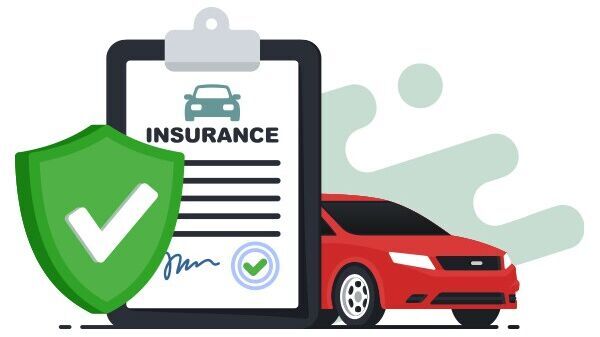Table of Contents
1. What is Car Insurance?
Car insurance is a contract between the vehicle owner and an insurance company in which the vehicle owner pays regular premiums in exchange for the insurer’s promise to cover financial losses related to the vehicle. These losses can include damages to the car, injuries sustained in accidents, and even legal fees in case of a lawsuit.
Car insurance policies are designed to provide protection for both the driver and others on the road. They can also help cover the costs of repairs, medical expenses, and legal fees, depending on the type of coverage selected.
2. Types of Car Insurance Coverage
There are several types of coverage you can choose from, each offering different levels of protection. The most common types of car insurance policies include:
a. Liability Insurance
Liability insurance is the most basic form of car insurance and is mandatory in most states. It covers damages or injuries caused by you (the policyholder) to other people or property in an accident where you are at fault. It typically includes:
- Bodily Injury Liability: Covers medical expenses, pain and suffering, and lost wages for people injured in an accident you caused.
- Property Damage Liability: Covers the cost of damage to another person’s property, such as their vehicle, fence, or building, in the event of an accident you are responsible for.
Liability insurance does not cover your own vehicle or injuries to yourself and passengers.
b. Collision Insurance
Collision insurance covers damage to your own vehicle resulting from a collision with another vehicle, object, or even a stationary object (such as a tree or guardrail). It typically applies regardless of who is at fault.
If you’re involved in an accident, collision coverage will help pay for the cost of repairs or the replacement of your vehicle, minus the deductible.
c. Comprehensive Insurance
Comprehensive insurance, often called “other than collision” coverage, helps cover damage to your car from non-collision incidents such as:
- Theft
- Vandalism
- Natural disasters (hail, floods, fires)
- Falling objects (tree branches)
- Animal collisions (e.g., hitting a deer)
This coverage is usually optional but is highly recommended for drivers with newer or more expensive vehicles.
d. Personal Injury Protection (PIP)
Personal injury protection, or PIP, is often referred to as “no-fault insurance.” This coverage helps pay for medical expenses, lost wages, and other related costs regardless of who is at fault for the accident. It may also cover passengers in your car and pedestrians involved in the accident.
PIP coverage varies by state, as some states are “no-fault” jurisdictions, where each driver’s insurance covers their medical costs, no matter who caused the accident.
e. Uninsured/Underinsured Motorist Coverage
Uninsured or underinsured motorist coverage provides protection if you’re involved in an accident with a driver who doesn’t have insurance or doesn’t have enough insurance to cover the damage. This coverage can pay for medical bills, car repairs, and other expenses if the at-fault driver is underinsured or lacks coverage.
f. Medical Payments Coverage
Medical payments coverage (MedPay) helps pay for medical expenses incurred by you or passengers in your car, regardless of who is at fault in an accident. It covers a wide range of medical expenses, including hospital bills, surgeries, and sometimes funeral expenses.
g. Roadside Assistance
Roadside assistance is an optional add-on to a https://takara-fune .net/ policy that helps you with services like:
- Towing
- Flat tire changes
- Battery jump-starts
- Lockout assistance
- Fuel delivery
This coverage provides peace of mind for those who often find themselves in need of help on the road.
h. Rental Reimbursement
Rental reimbursement covers the cost of renting a car while your vehicle is being repaired after an accident. This is especially helpful if you rely on your car for daily transportation and need a temporary replacement.
3. Factors Affecting Car Insurance Premiums
Several factors influence how much you’ll pay for car insurance. Insurance companies assess these factors to determine the level of risk associated with insuring you. Common factors include:
a. Driving History
Your driving record is one of the most significant factors affecting your premium. Drivers with a history of accidents, traffic violations, or claims are considered higher risk and may face higher premiums.
b. Vehicle Type
The make, model, and age of your car can impact your insurance premium. Expensive vehicles, sports cars, and luxury models typically have higher insurance premiums because they cost more to repair or replace. On the other hand, vehicles with strong safety features, lower repair costs, and high safety ratings may qualify for lower premiums.
c. Location
Your location plays a crucial role in determining your car insurance rates. Urban areas tend to have higher premiums due to a higher risk of accidents, theft, and vandalism, while rural areas may have lower rates.
d. Age and Gender
Younger drivers, especially teenagers, typically pay higher premiums due to their lack of driving experience and higher risk of accidents. Gender can also play a role, with males often paying more than females, as statistics show men tend to be involved in more accidents.
e. Credit Score
In many states, insurance companies may use your credit score to determine your premium. Drivers with higher credit scores are often considered lower risk and may receive lower rates.
f. Deductible
The amount you pay out-of-pocket before your insurance coverage kicks in is called a deductible. If you choose a higher deductible, you may lower your monthly premium. However, you will need to pay more in the event of a claim.
4. Choosing the Right Car Insurance Policy
Selecting the right car insurance policy involves considering your needs, budget, and the level of coverage you want. Here are some tips to help you choose:
a. Evaluate Your Coverage Needs
- If your car is older and has a low market value, you may only need liability insurance or basic coverage.
- If your car is new or has significant value, you might want to invest in comprehensive and collision coverage to protect your investment.
- If you live in a no-fault state, PIP coverage may be a necessity.
b. Compare Quotes
Insurance premiums can vary significantly from one company to another. It’s important to shop around and compare quotes from multiple insurers. Be sure to compare similar coverage levels to ensure you are getting the best deal for the coverage you need.
c. Consider Discounts
Many insurance companies offer discounts for safe driving, bundling multiple policies, installing anti-theft devices, or being a member of certain organizations. Be sure to ask about any available discounts to reduce your premium.
d. Review the Terms and Conditions
Before signing a policy, carefully read the terms and conditions to ensure you understand what is covered and what is not. Pay attention to exclusions, limits of coverage, and the claims process.
5. Conclusion
Car insurance is essential for protecting yourself, your passengers, and others on the road. By understanding the different types of coverage, factors affecting premiums, and how to choose the right policy, you can ensure that you have the right protection at an affordable price. Whether you’re looking for basic liability coverage or comprehensive protection, car insurance is a crucial part of responsible vehicle ownership, providing peace of mind and financial security in case of an accident or emergency.



